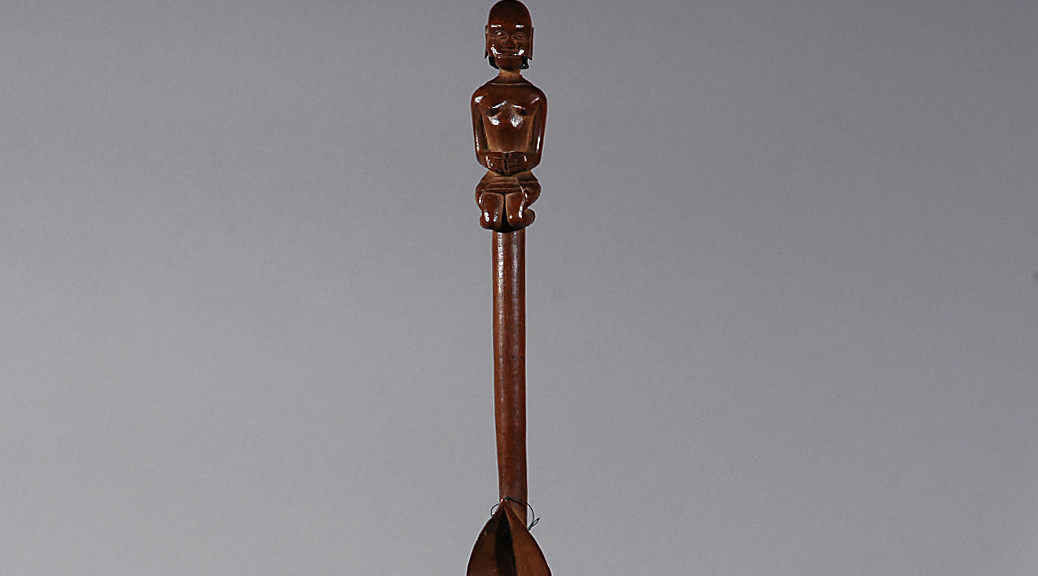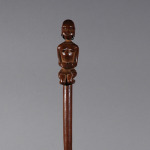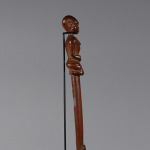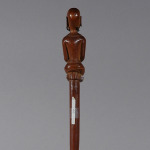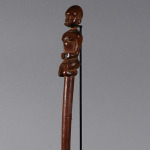SNK 1212-36
Kamba (Kampa) spoon, Kenya
H: 38 cm (15″), W: 5,5 cm (2,2″)
Light brown wood
This fine and well carved spoon is from the Kamba tribe, also called the Akamba, which is a Bantu ethnic group residing in the semi – arid Eastern Province of Kenya. Their homeland stretches east from Nairobi towards the Tsavo and Northeast to Embu.
Evidence suggests that this traditional Kamba carved spoon may be traced back to one man, Mutisya Munge. He was a Kamba tribesman from the Wamunya location of Machakos who even before the First World War was well known as a skilled carver of ceremonial sticks. Munge joined the army in 1914 and served with the Carrier Corps in Tanganyika. At this time he started producing carvings of Askaris and African people in traditional dress with the express purpose of selling them to Europeans. On his return home after the War he devoted himself solely to carving such works which were popular with the many newly-arrived Europeans in the colony. Initially members of his family assisted him in meeting the demand, and later men from neighboring communities also started producing carvings. The boom in tourism after the Second World War resulted in a proliferation of carvers working for local markets as well as for export to other African countries, and in the present day the Kamba carvers continue to produce vast quantities of carvings for sale to tourists in East Africa.
Provenance: Private Danish collection. It was either acquired directly from Lau (Laurence) Sunde’s collection in Copenhagen, which dates back to the 1940s, or Lau (Laurence) Sunde was an adviser to the collector.
Sunde had a “Etnografica” boutique in 1948, that became recognized among collectors as the most specialized boutique of its kind at the time. Tribal and oriental artefacts were purchased from private collectors as well as at auctions in Paris, Amsterdam and London, among other places.
Full description of Lau (Laurence) Sunde will be forwarded by request.
Literature: Walter Elkan, ‘The East African trade in woodcarvings,’ Africa, 28, 1958, pp.314-323; and S Sanamu, Adventures in search of African art, London, 1961, pp.19-24; A Troughear, ‘Kamba carving: art or industry?’, Kenya Past and Present, 19, 1987, pp.15-25; Bennetta Jules-Rosette, Aesthetics and market demand: the structure of the tourist art market in three African settings’, African studies review, 29(1), March 1986, pp.41-59
Request price for Kamba Spoon